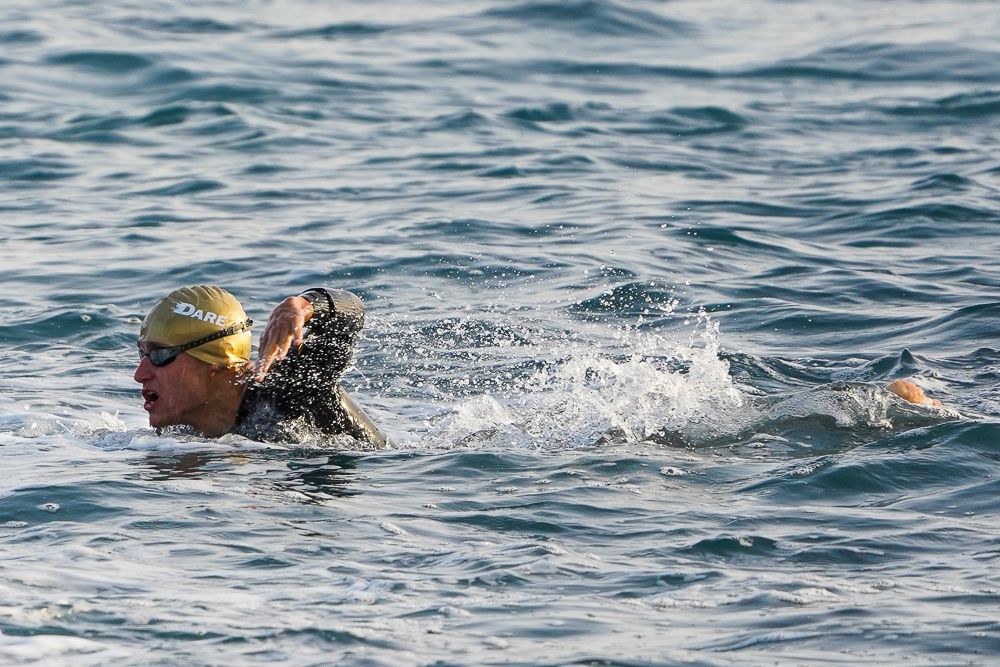Max out your swimming potential with the right balance of open-water and pool workouts
In his lifelong quest to shed his status as a "Hydrosloth," Triathlon Canada Magazine writer, Kevin Heinze has recruited the help of Canadian Olympic swimmer Brent Hayden and his "Swimming Secrets" program to gain some speed in the water.
 Photo by:
Kevin Mackinnon
Photo by:
Kevin Mackinnon
While our coach was breaking records and amazing the swim world in Japan, I was (and still am) in the blue/ grey world that is the Okanagan Valley.
Has it really been three months since I have been in a swimming pool? Yep. Since my last post, due to laziness and opportunity, I have been swimming exclusively in lakes. Since the Ironman Canada swim is held in Okanagan Lake and not a swimming pool, I thought this would be a good idea. With the exception of a two week period in July, I have been swimming between three and five times per week. About 60 per cent of the swims have been with my wetsuit, leaving the other 40 per cent … well you can do the math.
If you have never had the good fortune to swim exclusively in open water for long periods of time, here are some thoughts from my experiences. The big takeaway is that only swimming in open-water is not the best training approach for swimming, even if your goal is an open water triathlon. Here is why:
First of all, lake conditions change. Depending on the lake and the time of day you swim at, you may be swimming on glass, or in a washing machine. If you have a specific workout that needs to be done, it may have to be modified, or scrapped altogether because of waves.
Secondly, depending on the place you swim in, it could really be tough to do swim intervals. Those of us not fortunate to have a pair of Form goggles and the appropriate watch can’t see the distance ticking off. Yes, there are GPS watches that will beep and vibrate at set distances or times, but you can miss those in choppy conditions, too. You can use the swim buoys as a guide if where you are swimming has them, but there is the issue of consistent distances between the buoys. If you are looking for precise measurements for your workouts, a pool can’t be beat.
Thirdly, going all out in open water can be intimidating. As we all know, one of the ways to get faster, is to just hammer it. Doing this in a lake, potentially a long way from shore can be intimidating. With no lane walls to hang on to when you are toast, you might not push yourself to the same extent you would/could when you have a safety net.
Finally, talking to dozens of fellow swimmers, I know that I am not alone when I say that I usually dig the deepest when I am chasing my “competitor” in the lane next to me. Typically you don’t get that same opportunity when you are swimming in a lake.
In spite of these drawbacks to exclusively swimming in the open water for triathlon training, there is also no substitute for it – open-water swims should definitely be a regular part of your training routine. Whether you need the mental toughness that swimming in roughwater forces you to develop, or the special pacing and sighting requirements that are part of a “complete triathlete’s” toolbox, open water swimming is essential. Finding the optimal balance of pool to open water swimming is perhaps less important than just getting out there and doing it.
Kevin Heinze is a regular contributor to Triathlon Magazine Canada.
